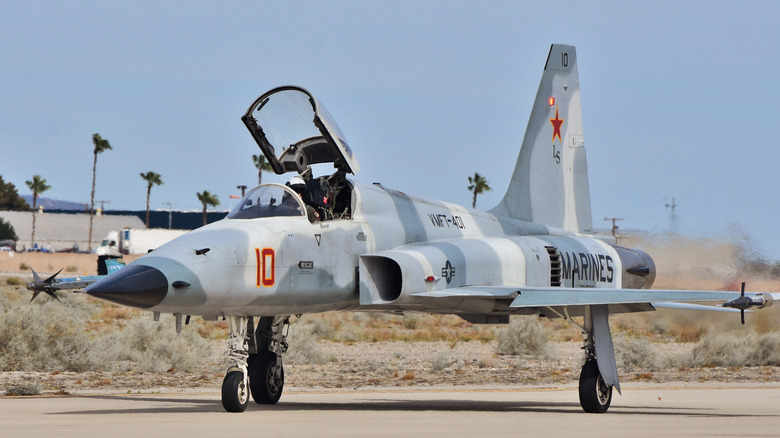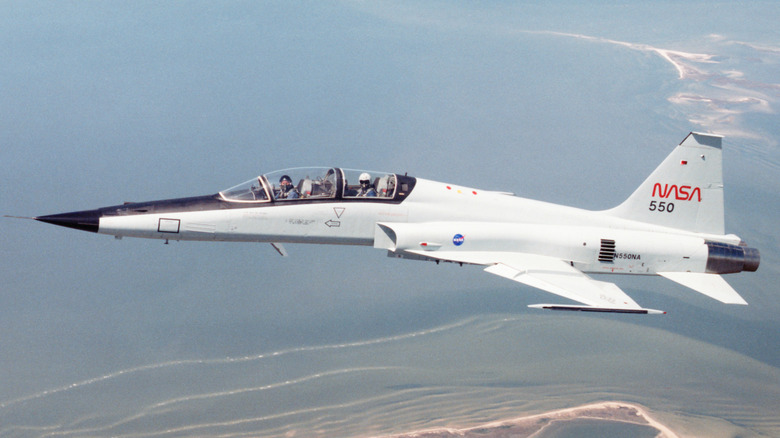This 1960s Navy Fighter Jet Is So Good, It's Still In Service Today
When the F-5 Tiger first flew, it was intended to be a fighter jet mass-produced for taking down Soviet MiG jets or the adversary of whatever country happened to buy the plane. It was cheap to manufacture, acrobatic, easy to fly, and wildly fast with a top speed of over 1,200 miles per hour at full tilt. More than 26 countries took orders of the F-5 totaling more than 2,600 aircraft leaving the assembly line.
But that's not where the F-5 found its niche. Although it flew admirably as a fighter jet and performed numerous other roles all through the Vietnam era, it excelled in its new role as a trainer jet when newer jets like the F-16 became the primary fighter jet for several countries. The F-5 is perfectly suited to allow new pilots to get acclimated to a supersonic jet, but where the F-5 really shines is as an adversarial fighter.
In the Western world, getting your hands on a Russian MiG or Chinese Chengdu fighter jet to train against is next to impossible. To compensate for this, the U.S. Navy and Marine Corps use F-5s to pretend to be enemy fighter jets during training exercises, hence the big red star on the vertical stabilizer of many F-5s.
Playing the bad guy
Playing the bad guy to spar against wasn't some one-off role or a temporary exercise for the F-5 during the Cold War. It's still operating as an adversarial fighter to this day, nearly six-decades after the first F-5s rolled off the line. The F-5 is kind of like an old Chevy truck powered by a Small Block. Both are reliable and relatively simple for maintenance and operation. They were mass produced on a huge scale meaning that there are no shortages of parts, and the F-5 and the Chevy can both be modified for really whatever role you can think of.
Defense company Northrop Grumman continues to improve and tweak the F-5 to keep it in active training service with upgrades to its avionics systems, aerodynamics, and control surfaces. Spec-wise, the current F-5 Tiger II used by the U.S. Naval Aviators is powered by two General Electric turbojet engines that produce a total of 10,000 pounds of thrust. The F-5N is a little over 47 feet, four inches long and has a wingspan of 26 feet, eight inches.
Not everyone wants to play the bad guy, but the F-5 is one of the best to ever do it and will keep serving far into the future.

